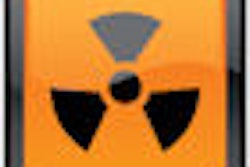There are still no strong data linking the use of ionizing radiation in cardiac imaging to the development of cancer, though several studies have found that higher radiation exposure may increase the risk of developing cancer, concludes a paper published online January 30 in the Journal of the American College of Cardiology.
The author of the review paper, Dr. Andrew Einstein, PhD, from Columbia University Medical Center and NewYork-Presbyterian Hospital, emphasized that several important epidemiological studies involving similar levels of radiation exposure all show increased cancer risk, and allow risk to be projected based on current exposure levels.
However, hard data do not support the link between heart scans and cancer. And when considering the impact of a diagnostic test, it's important to take a balanced view that includes the benefits as well as the risks to patient health, Einstein wrote (JACC, January 30, 2012).
Avoiding essential procedures?
In recent years, more imaging facilities have been monitoring and tracking radiation dose, reducing it wherever possible. Unfortunately, concerns over radiation dose have reached the point where the belief in the potentially deleterious effects of radiation is so widespread as to lead to avoidance of essential procedures in some cases, Einstein wrote.
"It is important for a discussion of the downside of cardiac imaging to put these risks in context," he wrote. "Risks from testing should not be viewed in isolation, but rather within the context of a sober and simultaneous evaluation of the benefits, risks, and costs of a given test in a specific clinical context."
Concerns over dose have arisen for two primary reasons. First, imaging procedure volumes have grown tremendously; overall CT myocardial perfusion imaging volume, for example, has increased by nearly threefold in the past decade. Second, the radiation doses for individual exams have also increased, he wrote.
Twenty-five years ago, for example, nonmedical radiation amounted to an effective dose of 3 mSv per year, whereas medical radiation accounted for 0.53 mSv per year. Since then, nonmedical radiation exposure has remained fairly constant, but medical radiation has increased about sixfold, to 3.0 mSv per capita per year, Einstein wrote. Radiation from cardiac imaging and interventional procedures accounted for roughly 17% of all ionizing radiation to the U.S. public from all sources except radiotherapy.
By 2006, the dose from cardiovascular imaging and intervention constituted 19% of the collective effective dose of radiation from all nonradiotherapy sources to the U.S. population, and was nearly three times the collective dose from all medical sources in the early 1980s, he wrote.
Dose variability
One current challenge in estimating cancer risk from imaging is that models for estimating the effective radiation dose a patient receives during a scan are based on a "reference person" with a standardized, nonobese body habitus that ignores the tremendous variability of most patients. Also variable are different scanning protocols used at various facilities.
How variable? In the Prospective Multicenter Study on Radiation Dose Estimates of Cardiac CT Angiography in Daily Practice I (PROTECTION I), which evaluated radiation dose at 50 sites around the world, site-specific median dose-length products (DLPs) had a sevenfold range and exceeded 2,000 mGy-cm, or a median effective dose of at least 30 mSv, in the highest-dose study sites.
Most patients also undergo several procedures. In a series (Einstein et al) of 1,097 patients undergoing index myocardial perfusion scans, the typical patient underwent a median of 14 additional radiation-bearing procedures over a 20-year period, receiving a cumulative estimated effective dose of 64 mSv.
Other studies
Survivor data from nuclear bombs dropped in Hiroshima and Nagasaki, Japan, in 1945 still constitute an important data source on the link between cancer and radiation. They represent one of the few large, basically healthy populations to be exposed to varying radiation levels, with follow-up for several decades.
In a population of 27,789 atomic bomb survivors who received doses of 100 mSv or less and who were still alive on January 1, 1958, the mean dose was 29 mSv, and 4,406 solid cancers were detected between 1958 and 1998. The number of expected cancers based on the nonexposed cohort was 4,325, and thus there were 81 (2%) excess cancers attributed to radiation, i.e., an excess relative risk of 0.02.
On the other hand, the international Study of Cancer Risk Among Radiation Workers (Cardis et al) included 5.2 million person-years of follow-up of workers at 154 facilities, 90% of whom received doses of 50 mSv or more from chronic occupational exposure. The study found no excess relative risk from radiation when Canadian workers were excluded, although shortcomings with dosimetry and other issues have led to criticism of this study.
There are also several studies that have yielded strong epidemiological data linking medical radiation to cancer risk, but the doses are typically higher than those received by cardiac imaging patients, "a necessary condition to enable adequate statistical power at smaller sample sizes," Einstein wrote.
Preston et al performed a systematic review of several studies involving breast radiation dose for benign conditions for which patients commonly received radiation in the 1950s and 1960s. They concluded that the risk of breast cancer "depends linearly on dose with a downturn at high doses, where cell death may occur, and that risk is similar between acute and fractionated high-dose-rate exposures, but lower with protracted low-dose-rate exposures," Einstein reported.
The results of the Life Span Study (Brenner et al) were similar, although variation in rates between studies led the authors to conclude that "no simple unified summary model adequately describes the excess risks in all groups," Einstein quoted from the results.
Cardiac study
The sole completed study dedicated to radiation from cardiac imaging procedures was performed in Quebec, Canada, where Eisenberg et al retrospectively evaluated a cohort of 82,861 patients discharged from a hospital between 1996 and 2006 after acute myocardial infarction that required cardiac and/or interventional imaging exams. A typical effective dose was assigned for each of four specific cardiac procedures: myocardial perfusion imaging (15.6 mSv), diagnostic cardiac catheterization (7.0 mSv), percutaneous coronary intervention (15.0 mSv), and resting ventriculography (7.8 mSv).
Radiation from cardiac procedures was calculated at 5.3 mSv per patient-year, and a mean five-year follow-up yielded 12,020 incident cancers. In a Cox proportional hazards model adjusted for age, sex, and exposure to low-dose radiation from noncardiac procedures, the cumulative estimated dose from cardiac procedures was found to be an independent predictor of incident cancer (hazard ratio: 1.003 per mSv, 95% confidence interval: 1.002 to 1.004), Einstein wrote. For every 10 mSv of radiation, the authors estimated a 3% increase in risk of age- and sex-adjusted cancer over the follow-up period.
But methodological concerns have been raised regarding the study, and its results should be regarded as preliminary, Einstein wrote. For example, cancer incidence in the cohort was at least twice the expected incidence in the Canadian public, and it's especially suspect considering the short five-year follow-up. Solid tumors, constituting 92% of the cancers in the cohort, typically occur only after a five- to 10-year latency period after radiation exposure.
Studies in progress
Several studies are currently under way, most measuring the effects of medical radiation in pediatric populations.
The first of these studies (Hricak, Pearce) will report in 2013 the results of approximately 250,000 individuals younger than age 22 in the U.K. Similar studies are being conducted in Ontario, Canada (275,000 children), Australia (150,000), Israel, and several European countries, Einstein noted.
The World Health Organization's International Agency for Research on Cancer is coordinating a European collaborative study of more than 1 million children, called the Epidemiological Study to Quantify Risks for Pediatric CT and to Optimize Doses (EPI-CT). Finally, a study just beginning in the U.K. will evaluate cancers in a cohort of children who underwent interventional cardiology procedures.
Translating data to epidemiological risk
The most recent Biological Effects of Ionizing Radiation (BEIR) report, BEIR VII, concluded that the linear no-threshold (LNT) model -- proposing that cancer risk rises linearly with radiation exposure -- best fits currently available data for the purposes of radiation protection. LNT does not reflect a conservative approach to estimating risk from low-dose radiation exposure, but rather "the best simple model given the currently available data," Einstein quoted from the report.
Each of BEIR VII's assumptions "was based on exhaustive consideration of all available biophysical as well as epidemiological evidence by a team of experts who are world-class scholars of radiation biology, physics, and epidemiology, and who were accountable to multiple feedback mechanisms," he wrote.
"Although it has become popular in some cardiovascular circles to minimize the potential problem of ionizing radiation exposure by emphasizing the uncertainty inherent in these assumptions, foremost among them the LNT model, epidemiological studies involving over a million individuals exposed to medical radiation will provide us with a fuller picture as to the true effects of radiation exposure from cardiac imaging," Einstein concluded.


















